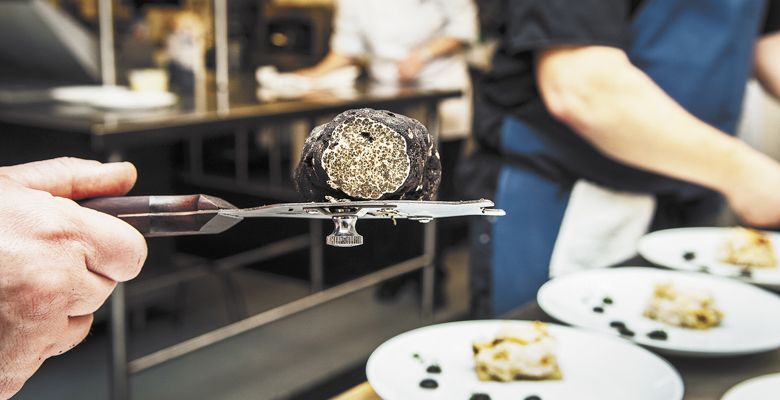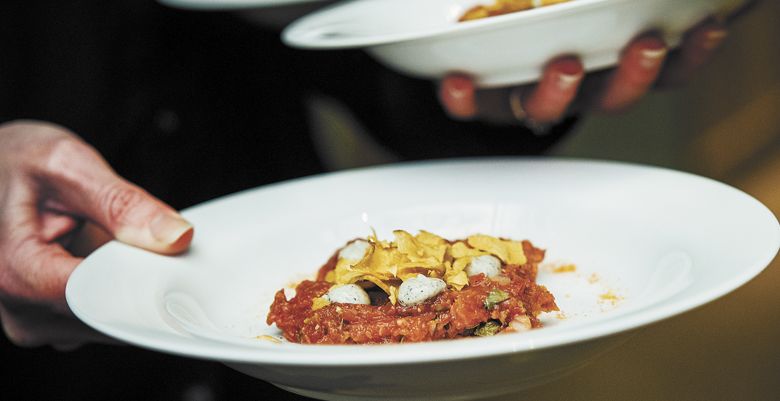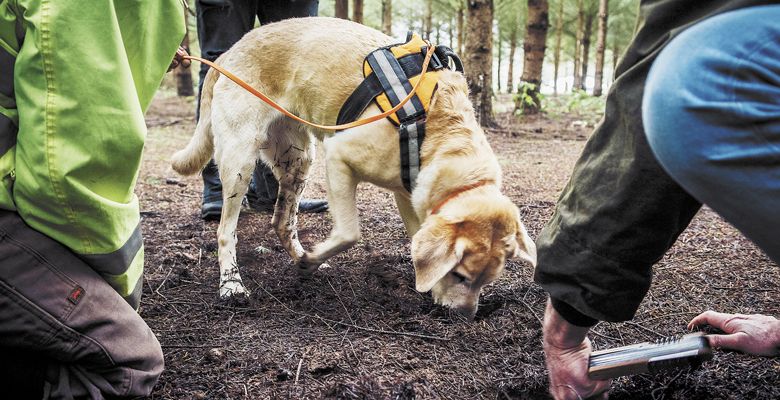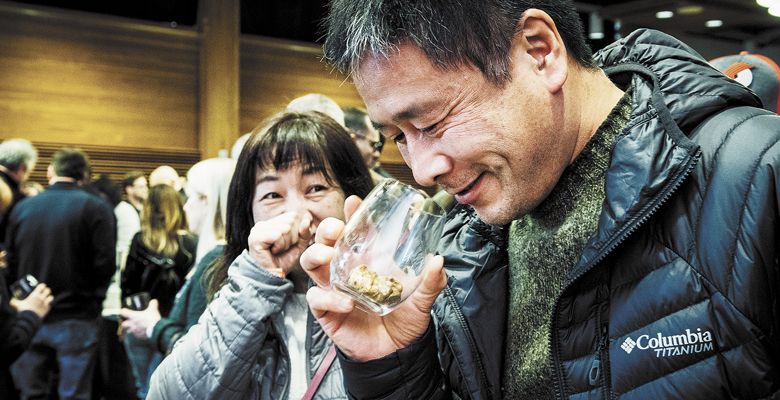Digging for Gold
Oregon Truffle Festival celebrates treasured fungi
Famous gastronome Brillat-Savarin pronounced truffles the diamonds of gastronomy, which makes sense considering their price, ability to generate excitement and variations in quality. Though commonly found in France and Italy, truffles also grow in the Willamette Valley, a perfect habitat for four native species recognized for their culinary attributes.
The Oregon Truffle Festival, established in 2006, promotes a wider appreciation of the numerous uses for Oregon’s native black and white truffles. Through cooking classes and chef collaborations, the event shows guests how Oregon truffles can challenge the finest truffles in the world, while simultaneously promoting a vibrant seasonal food culture.
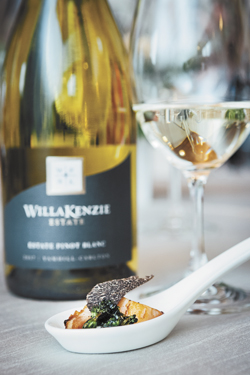
This year, the winter festival encompassed two weekends in Eugene and Yamhill County, beginning with The Joriad North American Truffle Dog Championship. Organizer Kristina Leipzig led the fifth annual competition, with a nose-to-ground final in the woods — Ava Chapman and her dog, Joey, took top prize.
Depending on the ticket package, guests participated in a range of activities, from truffle dog-training classes, to intimate luncheons at various wineries, to truffle hunts in which participants search for their own buried treasures, to elaborate dinners at wineries such as Pfeiffer Vineyards and Domaine Serene, not including the Grand Truffle Dinner, which paired an assortment of local wines with truffled dishes. Hosted by a panel of esteemed experts, an educational wine and food pairing seminar “Fruit and Earth” explored the differences between white and black truffles, and marketplaces in Eugene and Newberg offered visitors a chance to purchase fresh truffles and an abundance of local products using them — chocolate, oil, butter, sausage, honey, fish, steak and even whiskey.
While the festival serves to promote native truffles, it also establishes a collaborative educational and information-sharing hub for the burgeoning North American industry. Over the years, the event has successfully educated farmers, landowners, harvesters, truffle dog trainers, chefs and consumers about every aspect of native truffles and their cultivation, while furthering mycological research begun at Oregon State University more than a century ago.
Despite the state’s lengthy history of truffle research, its industry is still young and relatively undiscovered — though the lines to purchase truffles at the festival’s marketplaces might indicate a paradigm shift. Much like Oregon chanterelles, the few sources for wild truffles are actively pursued, and harvesters who sell truffles here are secretive about their locations. Perhaps this mystery forms part of their mystique — we all want what we can’t find. But there exists a misconception about Oregon truffles: They’re an inexpensive substitute for the real thing; this is anything but the truth.
What is a truffle and why Oregon?
The fruit of a fungus growing on the root of a tree defines a truffle. According to mycologist and Oregon Truffle Festival founder Dr. Charles Lefevre, a mutually beneficial relationship exists between the trees and truffles. The fungi forms a glove over the root tip, drawing in nutrients for the tree, which, in turn, returns sugar to the fungi. As it turns out, the iron-rich clay Jory soil found in the Willamette Valley that’s perfect for Pinot Noir is also ideal for truffles. Lefevre says, “Land that has been grazed by cattle or sheep, with lots of Douglas firs planted, produces an abundance of Oregon black or white truffles. Oftentimes, this land is unknowingly right in someone’s backyard.”
You may be wondering what the difference is between a white and black truffle. Like different strains of grapes, the different truffle varieties possess different flavor and aroma profiles. Definitely savory and categorically umami, Oregon white truffles tend to have piercing aromas of butter, fresh roasted hazelnuts and mint — when first harvested — whereas Oregon black truffles often contain flavors ranging from pineapple to strawberry when first harvested, becoming more Parmesan-like and chocolatey as they age.
The different varieties also ripen at different times during the season. The season for Oregon truffles runs as follows: Oregon winter white: January—April; Oregon black: December–June; Oregon spring white: May—July; and Oregon brown: September–January. The height of the season for both Oregon black and winter white truffles is January–April, with variation according to moisture and temperature patterns, particularly in the summer and fall.
Truffles require full ripeness to have culinary value, and it’s that mature aroma that attracts animals, including cute pooches. Though there are specific truffle-hunting breeds — Lagotto Romagnolo, for one — practically any dog can be trained to hunt. In fact, using dogs has drastically improved the quality of harvests. With their relatively small window for ripeness, truffles can be raked up instead of hunted by truffle dogs, but it’s likely most of those raked truffles will be immature, not ripe enough for culinary use. So, as quality has improved, prices have risen for Oregon truffles, demanding as high as $800 per pound, rivaling their French counterparts.
Cooking with Truffles
Fresh truffles have a relatively short shelf-life; they can’t be frozen and must be used within a week. It’s recommended to store them in the fridge, in a sealed container lined with a paper towel. Daily, open the container to let them breathe, change the paper and blot if they begin to sweat. Take advantage of your truffles while they’re in storage, place eggs, cheese, butter or any other foods containing some amount of fat into the container and let the infusion of aroma work its magic. When you’re ready to enjoy, transform any dish from ordinary to extraordinary — shave them over eggs, pasta, potatoes, chicken, scallops or even ice cream and custard for a decadent dessert.


